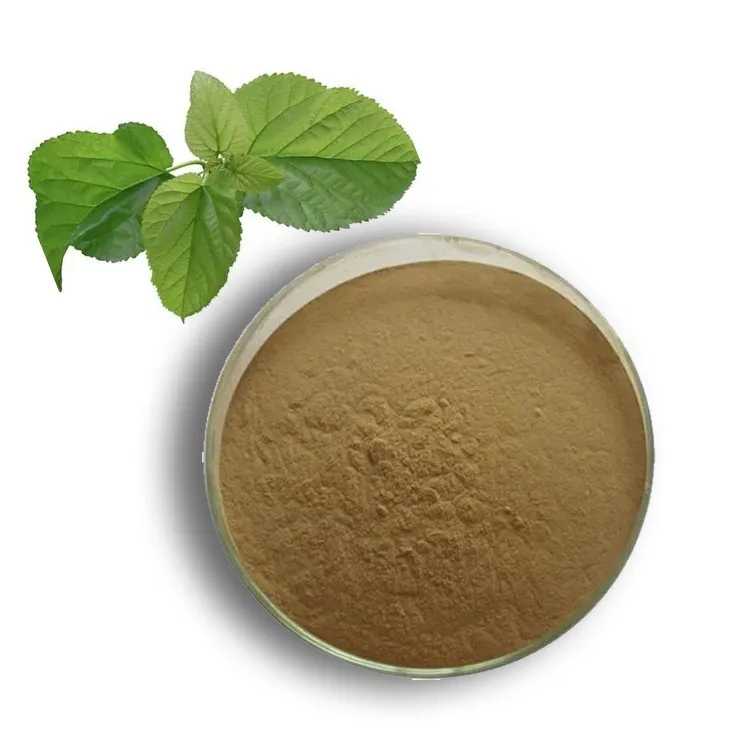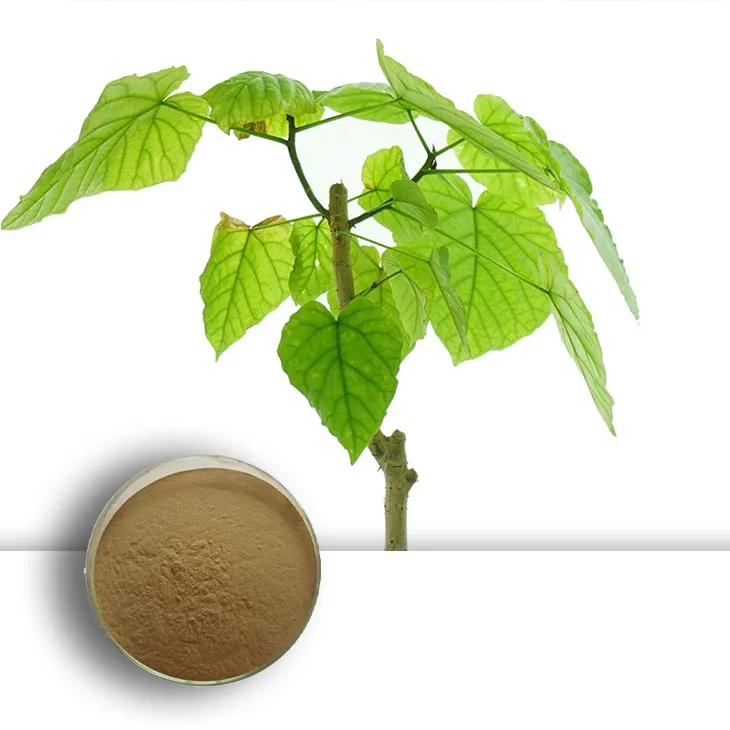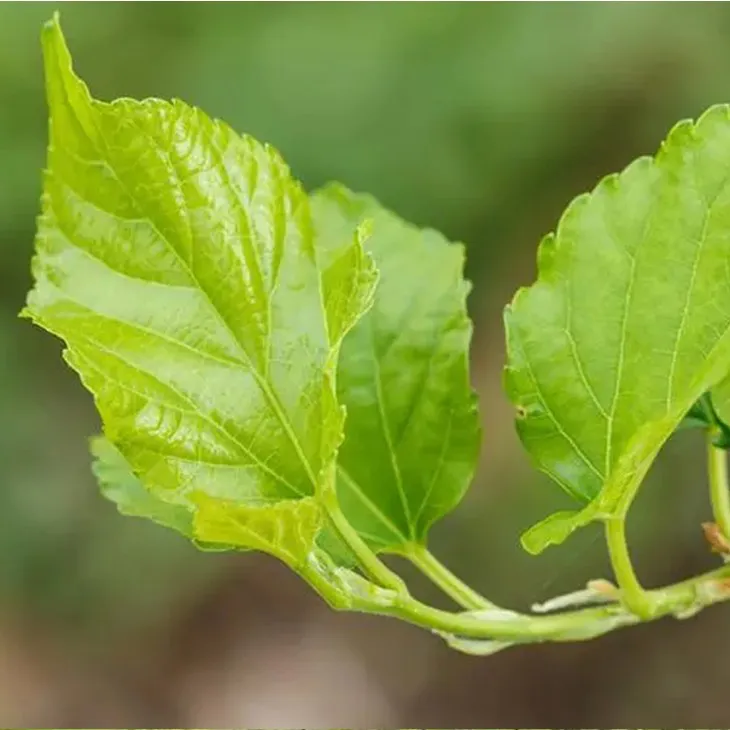- 0086-571-85302990
- sales@greenskybio.com
Mulberry Leaf Extract: Uses, Advantages, and Manufacturing Processes
2024-11-11

1. Introduction
Mulberry leaf Extract has been garnering increasing attention in various fields due to its remarkable properties. It is a product derived from the leaves of the mulberry tree, which has a long history of use in traditional medicine and other applications. This extract is rich in a variety of bioactive compounds, making it a valuable substance with a wide range of potential uses.

2. Uses in the Food Industry
2.1 Natural Preservative
The antimicrobial properties of Mulberry leaf Extract make it an excellent candidate for use as a natural preservative in the food industry. It can inhibit the growth of various microorganisms such as bacteria, yeasts, and molds. This is of great significance as it helps to extend the shelf - life of food products without the need for synthetic preservatives. For example, in bakery products, the addition of Mulberry leaf Extract can prevent the growth of spoilage - causing fungi, keeping the bread and pastries fresh for a longer period.
2.2 Functional Foods and Beverages
Mulberry leaf extract is also being increasingly incorporated into functional foods and beverages. It is a great source of nutrients such as vitamins, minerals, and antioxidants. When added to products like health drinks or energy bars, it can enhance the immune system. For instance, the antioxidants present in the extract can scavenge free radicals in the body, reducing oxidative stress and thus contributing to overall health improvement. Additionally, it may have potential benefits for blood sugar regulation, which is beneficial for people with diabetes or those at risk of developing the condition.

3. Advantages
3.1 Sustainability
One of the most prominent advantages of mulberry leaf extract is its sustainability. Mulberry trees are known for their ease of growth and cultivation. They can adapt to a variety of environmental conditions, which means that they can be grown in different regions around the world. This ensures a relatively stable supply of raw materials for the production of mulberry leaf extract. For small - scale farmers, growing mulberry trees can be a viable economic option as well. Moreover, the mulberry tree has other uses such as silk production (as it is the main food source for silkworms), which further adds to its overall value.
3.2 Environmental Friendliness
The manufacturing processes associated with mulberry leaf extract can be designed to be environmentally friendly. Through proper optimization, it is possible to reduce waste generation. For example, during the extraction process, the solvents can be recycled, minimizing the amount of chemical waste. Additionally, energy consumption can be carefully managed. Compared to some other extraction processes for natural products, the extraction of mulberry leaf extract can be made more energy - efficient, which is beneficial for reducing the carbon footprint of the production process.

4. Manufacturing Processes
4.1 Leaf Selection
The first step in the manufacturing process of mulberry leaf extract is the careful selection of mulberry leaves. This is crucial as the quality of the leaves directly impacts the quality of the final extract. The leaves are typically selected at the appropriate stage of growth. Younger leaves may contain higher levels of certain bioactive compounds, while more mature leaves may have different properties. Growers need to consider factors such as the variety of mulberry tree, the time of year, and the intended use of the extract when selecting the leaves.
4.2 Maceration
After leaf selection, maceration is a common initial step in the extraction process. In this step, the mulberry leaves are soaked in a solvent for a period of time. The choice of solvent is important as it can affect the extraction efficiency and the composition of the extract. Commonly used solvents include water, ethanol, or a combination of both. During maceration, the bioactive compounds in the leaves gradually dissolve into the solvent. The duration of maceration can vary depending on factors such as the type of solvent, the temperature, and the nature of the leaves. For example, a longer maceration time may be required for a more thorough extraction when using water as the solvent compared to ethanol.
4.3 Filtration
Once the maceration process is complete, filtration is carried out to separate the liquid extract from the solid residues. Filtration can be done using various methods, such as gravity filtration or vacuum filtration. Gravity filtration is a simple and cost - effective method, where the mixture is poured through a filter paper or a porous medium, allowing the liquid to pass through while retaining the solid particles. Vacuum filtration, on the other hand, is faster and can achieve a higher degree of separation. It uses a vacuum pump to create a pressure difference, forcing the liquid through the filter more quickly.
4.4 Purification
To ensure the high quality of the final mulberry leaf extract, further purification steps may be necessary. Ultra - filtration or chromatography techniques can be applied. Ultra - filtration is a membrane - based separation method that can remove smaller particles and impurities based on their size. Chromatography, on the other hand, is a more sophisticated technique that can separate different components in the extract based on their chemical properties. For example, high - performance liquid chromatography (HPLC) can be used to isolate and purify specific bioactive compounds in the mulberry leaf extract.
5. Conclusion
In conclusion, mulberry leaf extract has a wide range of uses in the food industry and offers several advantages, including sustainability and environmental friendliness. The manufacturing process, from leaf selection to purification, is a carefully controlled sequence of steps to ensure the production of a high - quality extract. As research on mulberry leaf extract continues, it is likely that more applications and benefits will be discovered in the future, further highlighting its potential as a valuable natural product.
FAQ:
What are the main uses of mulberry leaf extract in the food industry?
It can be used as a natural preservative thanks to its antimicrobial properties. Also, it can be added to functional foods and beverages as a health - promoting ingredient, such as enhancing the immune system because of its rich nutrient content.
Why is mulberry leaf extract considered sustainable?
Mulberry trees are easy to grow and cultivate, which guarantees a stable supply of raw materials for extract production. Besides, the extraction processes can be optimized to reduce waste and energy consumption, making it environmentally friendly.
What is the first step in the manufacturing process of mulberry leaf extract?
The common initial step in the extraction process is maceration. In this step, the mulberry leaves are soaked in a solvent for a period of time.
How is the high quality of mulberry leaf extract ensured during the manufacturing process?
After the initial maceration and filtration to separate the liquid extract from the solid residues, ultra - filtration or chromatography techniques may be further applied for purification to ensure the high quality of the final mulberry leaf extract.
Can mulberry leaf extract be used in non - food industries? If so, what are some examples?
The text mainly focuses on its uses in the food industry. However, given its antimicrobial and nutrient - rich properties, it may potentially have applications in the pharmaceutical or cosmetic industries, but specific examples are not provided in the given text.
Related literature
- The Bioactive Compounds in Mulberry Leaf Extract and Their Health Benefits"
- "Mulberry Leaf Extract: A Promising Natural Ingredient in Food Preservation"
- "Manufacturing Technologies for High - Quality Mulberry Leaf Extract"
- ▶ Hesperidin
- ▶ citrus bioflavonoids
- ▶ plant extract
- ▶ lycopene
- ▶ Diosmin
- ▶ Grape seed extract
- ▶ Sea buckthorn Juice Powder
- ▶ Beetroot powder
- ▶ Hops Extract
- ▶ Artichoke Extract
- ▶ Reishi mushroom extract
- ▶ Astaxanthin
- ▶ Green Tea Extract
- ▶ Curcumin Extract
- ▶ Horse Chestnut Extract
- ▶ Other Problems
- ▶ Boswellia Serrata Extract
- ▶ Resveratrol Extract
- ▶ Marigold Extract
- ▶ Grape Leaf Extract
- ▶ blog3
-
Cranberry Plants and Skin - care Products.
2024-11-11
-
Baicalin
2024-11-11
-
Coconut Water Powder
2024-11-11
-
Dan Shen Root Extract/Salvia Root Extract
2024-11-11
-
Acai Berry Extract
2024-11-11
-
Resveratrol extract
2024-11-11
-
Fenugreek Extract Powder
2024-11-11
-
Lavender Extract
2024-11-11
-
Sugarcane Extract
2024-11-11
-
Sophora Japonica Flower Extract
2024-11-11
-
Yohimbine Bark Extract
2024-11-11





















